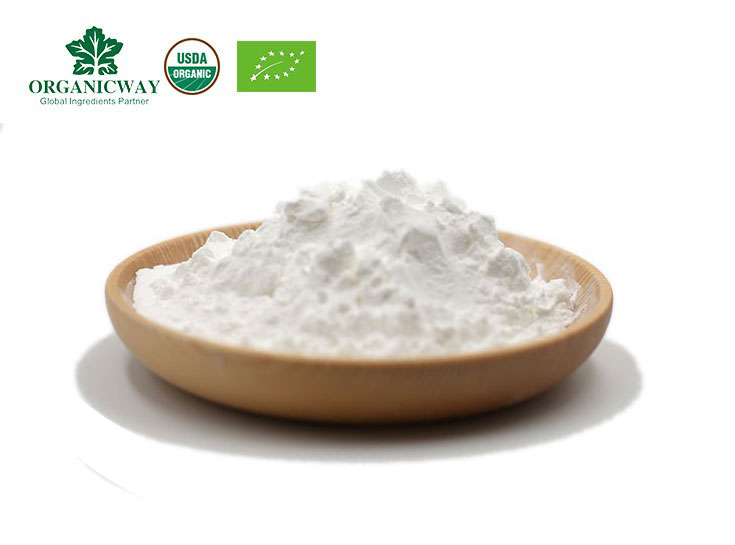Table of Contents
Sunflower protein is a plant-based protein that comes from the meal left after extracting the oil from the sunflower seeds. It has a protein content of 14% to 20% and also contains fiber, minerals, and antioxidants. Sunflower protein has various applications such as supplement, cosmetic ingredient, and animal feed additive. It also has various health benefits such as lowering cholesterol, improving digestion, enhancing immunity, and supporting muscle growth.
The global sunflower protein market was worth $70.4 million in 2020, and is projected to reach $156.3 million by 2030 with a growth rate of 8.8%. The market is driven by the increase in consumption of nutraceuticals, rise in awareness regarding lifestyle diseases, and surge in demand for vegan protein. However, the market also faces some challenges such as the availability of substitutes, high processing costs, and stringent regulations.
Among the types of sunflower protein, the organic segment is expected to grow the fastest with a growth rate of 10.0% from 2021 to 2030. This is because more consumers are choosing natural and organic products over conventional ones due to their concerns about the environmental and health impacts of conventional farming practices. Organic sunflower protein is produced without using synthetic fertilizers, pesticides, herbicides, or genetically modified organisms (GMOs).
Among the applications of sunflower protein, the nutraceuticals segment had the largest share of around 88% in 2020. This is because sunflower protein is widely used as a dietary supplement for people who want to increase their protein intake, especially vegetarians, vegans, athletes, and elderly. Sunflower protein can also be used as a meat alternative and a sports drink ingredient due to its high nutritional value and functional properties.
Challenges
Availability of Substitutes
One of the major challenges facing the sunflower protein market is the ease in availability of substitutes such as soy protein, pea protein, rice protein, hemp protein, and whey protein. These alternatives have higher protein content and lower cost than sunflower protein. For example, soy protein has 36 grams of protein per 100 grams, while sunflower protein has only 5.5 grams. Moreover, some consumers may have allergies or sensitivities to sunflower seeds or prefer different flavors or textures of protein products.
High Processing Costs
Another challenge is the high processing cost involved in producing sunflower protein. The extraction of oil from sunflower seeds requires a lot of energy and water, which increases the production cost and environmental impact. Furthermore, the purification and concentration of sunflower protein require additional steps such as filtration, precipitation, drying, and milling. These processes also affect the quality and functionality of sunflower protein by reducing its solubility, emulsification, foaming, and gelling properties.
Stringent Regulations
A third challenge is the stringent regulations and standards imposed by various authorities on the production and marketing of sunflower protein. For example, in the European Union (EU), sunflower protein must comply with the regulations on novel foods and food ingredients, which require a pre-market authorization based on scientific evidence of safety and nutritional value. In addition, organic sunflower protein must meet the criteria for organic production and labeling, which include specific rules on cultivation methods, processing techniques, packaging materials, and inspection systems.
Opportunities
Increasing Demand for Vegan Protein Sources
Despite these challenges, there are also some opportunities for the sunflower protein market to grow and expand in the future. One of them is the increasing demand for vegan protein sources due to the ethical, environmental, and health reasons. More people are adopting plant-based diets or reducing their consumption of animal products due to their concerns about animal welfare, climate change, biodiversity loss, antibiotic resistance, and chronic diseases. Sunflower protein can cater to this segment by offering a sustainable and nutritious alternative to animal-derived proteins.
Development of New Products and Applications
Another opportunity is the development of new products and applications using sunflower protein. For example, sunflower protein can be used as a cosmetic ingredient for skin care products due to its moisturizing, anti-inflammatory, and antioxidant properties. Sunflower protein can also be used as an animal feed additive for poultry, swine, and aquaculture due to its high digestibility, amino acid profile, and immune-boosting effects. Moreover, sunflower protein can be incorporated into various food products such as bakery, confectionery, snacks, beverages, and meat analogues due to its versatility, flavor, and texture.
Innovation of New Technologies and Methods
A third opportunity is the innovation of new technologies and methods for improving the production and functionality of sunflower protein. For example, new extraction methods such as enzymatic hydrolysis, ultrasound-assisted extraction, and supercritical fluid extraction can increase the yield and quality of sunflower protein by reducing the energy and water consumption and enhancing the solubility, emulsification, foaming, and gelling properties. Furthermore, new processing techniques such as microencapsulation, spray drying, and extrusion can improve the stability and shelf life of sunflower protein by protecting it from oxidation, aggregation, and microbial contamination.
Conclusion
The organic sunflower protein market is expected to grow significantly in the coming years due to the increase in consumption of nutraceuticals, rise in awareness regarding lifestyle diseases, and surge in demand for vegan protein. However, the market also faces some challenges such as the availability of substitutes, high processing costs, and stringent regulations. To overcome these challenges and seize the opportunities, the market players need to invest in research and development of new products and applications using sunflower protein and adopt new technologies and methods for improving the production and functionality of sunflower protein.

